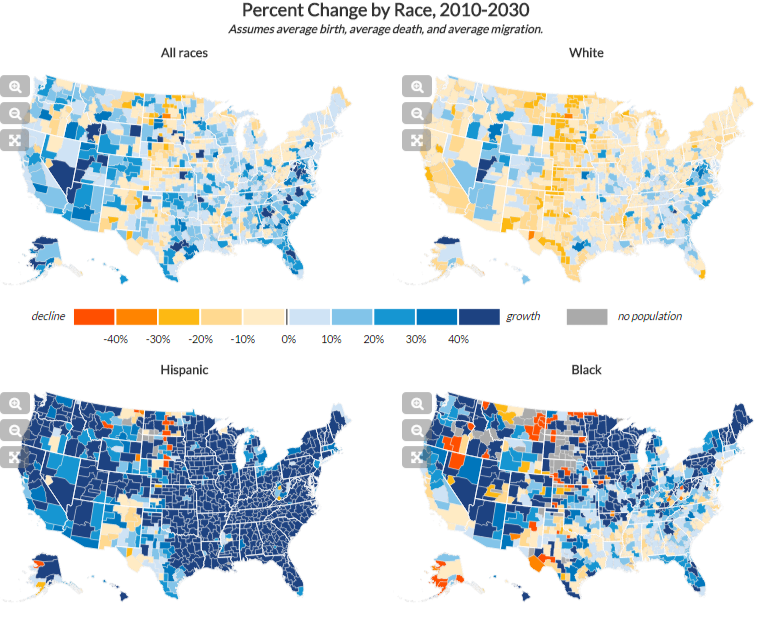What will your city be like in 15 years?
We know that Raleigh and Charlotte are among the fastest growing urban areas in the nation, while many rural areas of the state are facing population losses and stagnation. But if we know anything about the future with certainty, it’s that the future is inherently uncertain! How likely are these patterns? A new interactive tool from the Urban Institute uses historical trends and census data to map population projections for every state and metro area in the United States through 2030. Users can toggle assumptions about key demographic factors—births, deaths, and migration—to see how this might impact their area.

What does this tool tell us about North Carolina in 2030? Here are three main takeaways:
Across the state, the continued impact of population aging and rising diversity will be felt through 2030, regardless of the assumptions underlying the projections. And, as the authors of the study point out, it is important to keep in mind that demography is not destiny. Local actions and policies can and will shape the demographic landscape of the state.
Your support is critical to our mission of measuring, understanding, and predicting population change and its impact. Donate to Carolina Demography today.